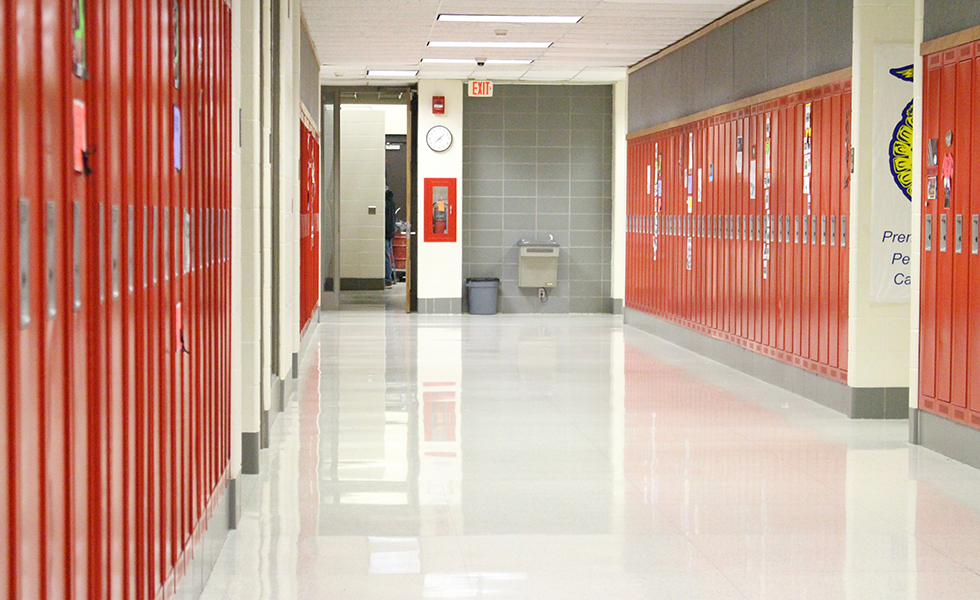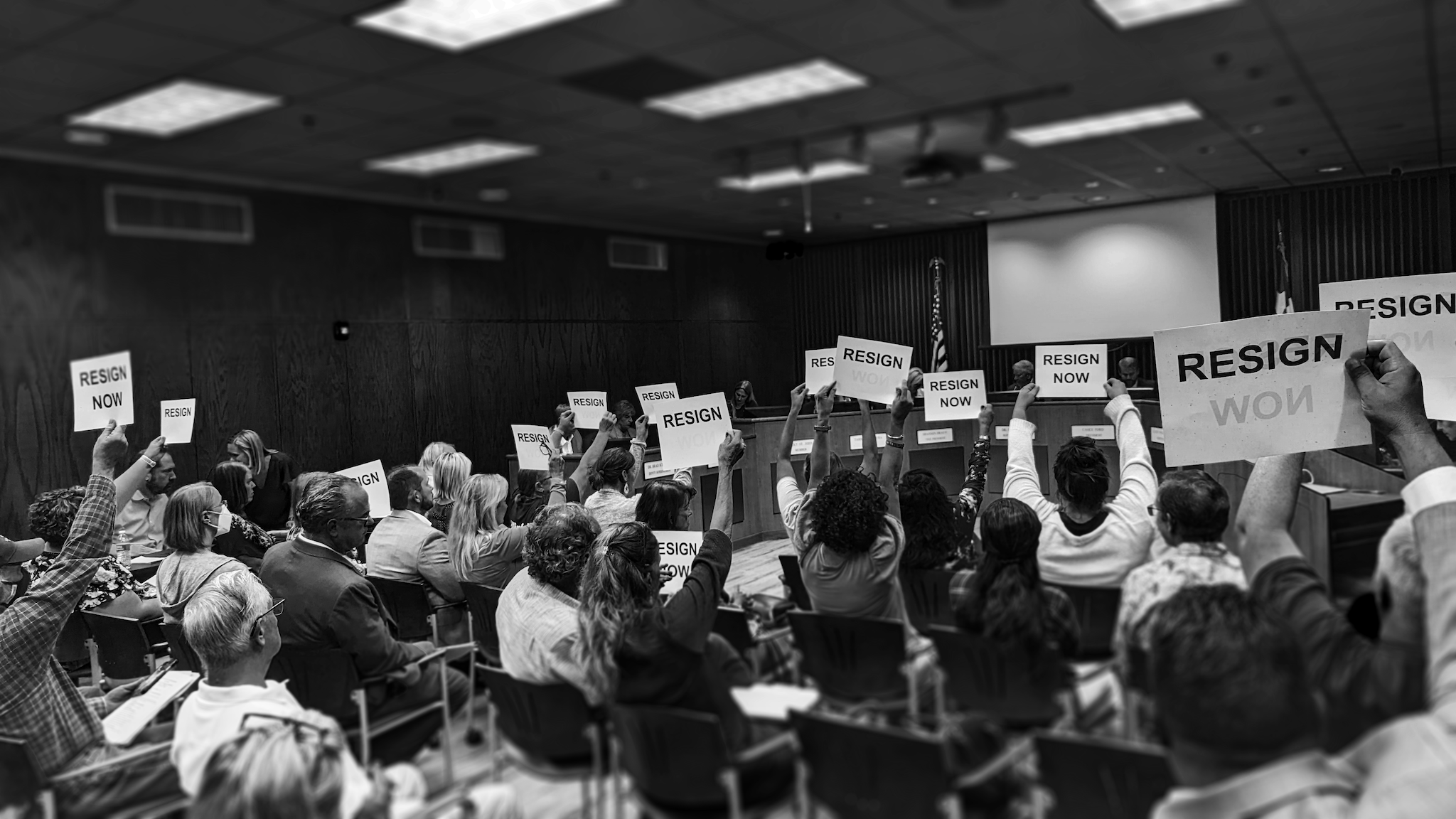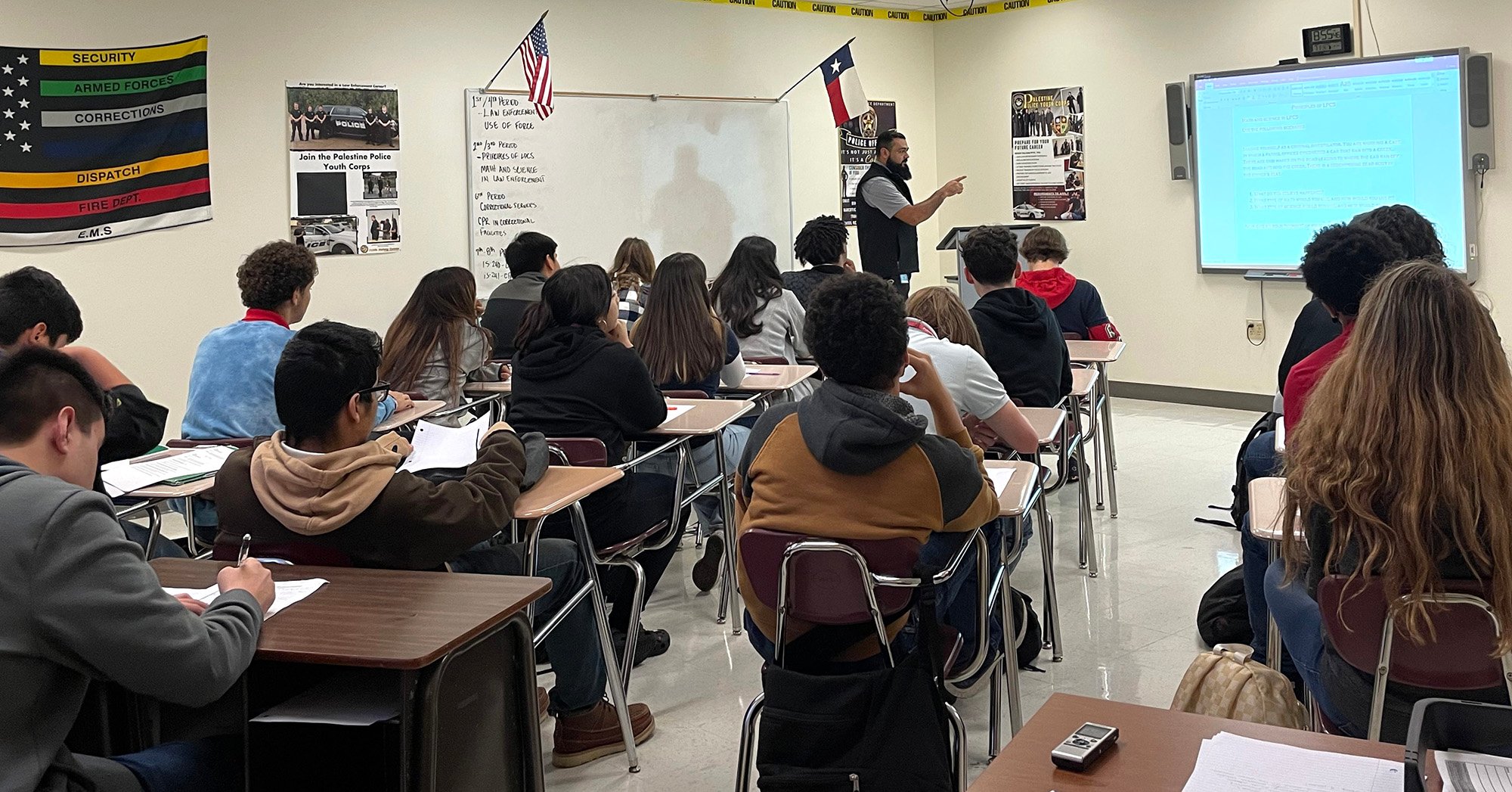
Tough Decisions Ahead for School Leaders in Rural Texas
With no edict from Governor Abbott, rural school officials must weigh the health of their students against the health of their communities.

Update: Governor Greg Abbott announced Thursday, March 19, that all Texas schools will be closed until April 3.
If he’d arrived four hours sooner, he’d have seen the crestfallen expressions on their faces. But on March 13, Wade Callaway was still en route from his Panhandle home of Gruver to San Antonio when he got the news: His two sons, both high school basketball players from the community of 1,160, would not get to compete in the Division 2A State Championship. The tournament, a mecca for high school athletes, was abruptly canceled to slow the spread of COVID-19. And just like that, a dazzling 30-5 season, months of six-days-a-week workouts, and hours of studious film review went down the tubes.
“We had a really great team. Great chemistry,” says Callaway, who is the superintendent of Gruver ISD and previously coached the Greyhounds basketball team. (The girls’ basketball team had just brought home the state title for the first time in school history a week before.) Droves of Gruver residents had piled into cars to make the nine-hour trek from the extreme northern edge of the Texas Panhandle to support the team. Still, Callaway says he doesn’t fault tournament officials for calling off the event. The state championship—where teams and fans from all over Texas would pack the Alamodome by the thousands—would be the perfect breeding ground for the virus.
Callaway says it’s important “to keep things in perspective.” After all, the virus may force the district to close altogether, indefinitely. And if that happens, community members stand to lose a lot more than a state title. The district is one of the biggest employers in town, and it provides child care, free and reduced meals for hungry kids, and a litany of other important but mostly unnoticed services. “Our school is the lifeblood of our community,” he says. “If this school did not function for an extended period of time, this community would greatly suffer.”
The same is true in vast swaths of rural Texas, where daily life tends to revolve around public schools. District leaders interviewed by the Observer say they are now faced with a dilemma: Do they close schools, with the knowledge that doing so will disrupt the heart of the community, or do they keep the doors open and risk exposing students and teachers to the deadliest pandemic of this generation?
Rural school leaders in Texas say they’ve had little time to plan for the disaster; early last week, COVID-19 seemed like a distant concern. Since then, major American cities have shut down bars, restaurants, and movie theaters. President Trump, who previously dismissed concerns about the virus, has changed his tune, recommending that people avoid gathering in groups larger than 10. The dismally low number of coronavirus tests available in the United States is slowly being ramped up, and predictably, exponentially more positive cases are being identified.
“Our school is the lifeblood of our community. If this school did not function for an extended period of time, this community would greatly suffer.”
Governor Greg Abbott has given few directives on whether Texas public schools should close amid the crisis. The result has been a wide variance in school closings and openings throughout the state. Some rural districts, such as Eastland ISD, east of Abilene, have announced closures through early April. At Hamlin ISD, to the northwest, kids are still going to school. A majority of Texas’ 1,200 public school districts were not in session this week, though many of those closures may be attributable to spring break. In other states, the response has been more unified—in New Mexico, for example, all schools were ordered to close for three weeks. In Kansas, school has been canceled until summer break.
School leaders in Texas say they’re thankful for the latitude Abbott has offered them; they’re also relieved that the Texas Education Association has waived state-mandated testing requirements and will continue to fund schools as if students were in attendance. But now those same leaders must make tough decisions. How do you get meals to Texas students, roughly 3 million of whom qualify for free and reduced lunches because of their low socioeconomic status? What do you do with elementary students if there’s no daycare in town and their parents still have to work, many in jobs that cannot be done from home? How do you continue providing homeless students—the state has previously counted more than 100,000 of them in a single school year—with supplies like clothes and toiletries?
Clay Montgomery, superintendent of Spearman ISD, an hour and a half east of Amarillo, says he’s trying to make educated, but not fearful, decisions. There have been no confirmed cases of the virus locally or in Amarillo, the closest big city, he noted. “We understand that if we close school down that the economic impact is really tough,” Montgomery says. “If you shut down school and there’s not any cases around us, then what’s the rationale?” Montgomery has not yet decided whether to close schools next week. Bryan Holt, superintendent of neighboring Booker ISD, says schools in his district likely will close next week. “I don’t see any way around it at this point.”
Holt says he’s trying his darndest to keep up with the neverending rush of information from health authorities, the news media, the Texas Education Agency, and other sources. But with a tiny administrative staff at this Panhandle district of 395 students, “it’s like drinking from a firehose.” Montgomery, the Spearman ISD superintendent, says, “Every day things are changing.”
This week is spring break for Gruver ISD and many other school districts in this slice of the Panhandle, which has given superintendents a little more time to figure out what to do. Callaway polled the district’s teacher’s early this week to determine whether they supported reopening the school this Monday; about 90 percent said they did. A primary consideration, teachers said, was that many elementary students would have no one to watch them during an extended closure.
School leaders in the region are expected to participate in a conference call this week in an attempt to arrive at a unified plan for the rest of the school year. Callaway says he and other administrators are trying to make the right choice, even if it’s a painful one in the short term. “We have prepared for the worst, but we hope for the best,” he says.
Read more from the Observer:
-
The COVID-19 Crisis Points the Way Toward a Better Texas: Once the virus passes, there’s no reason to let the powerful return peacefully to business as usual.
-
A Houston Art Exhibit Redefines ‘Chopped and Screwed’ Music: DJ Screw’s life and work act as a springboard for 15 mixed-media artists, reflecting ideas of identity and agency outside the mainstream.
-
How Christian Nationalism Moved from the Fringe to the White House: Katherine Stewart’s The Power Worshippers exposes the Christian right’s attempts to revise history and create an American theocracy.


